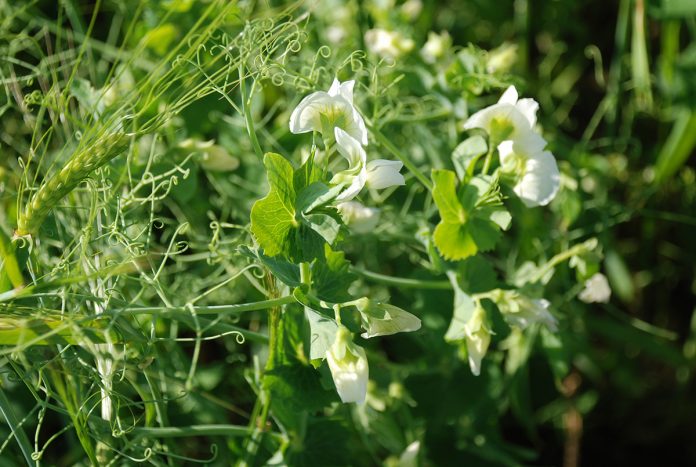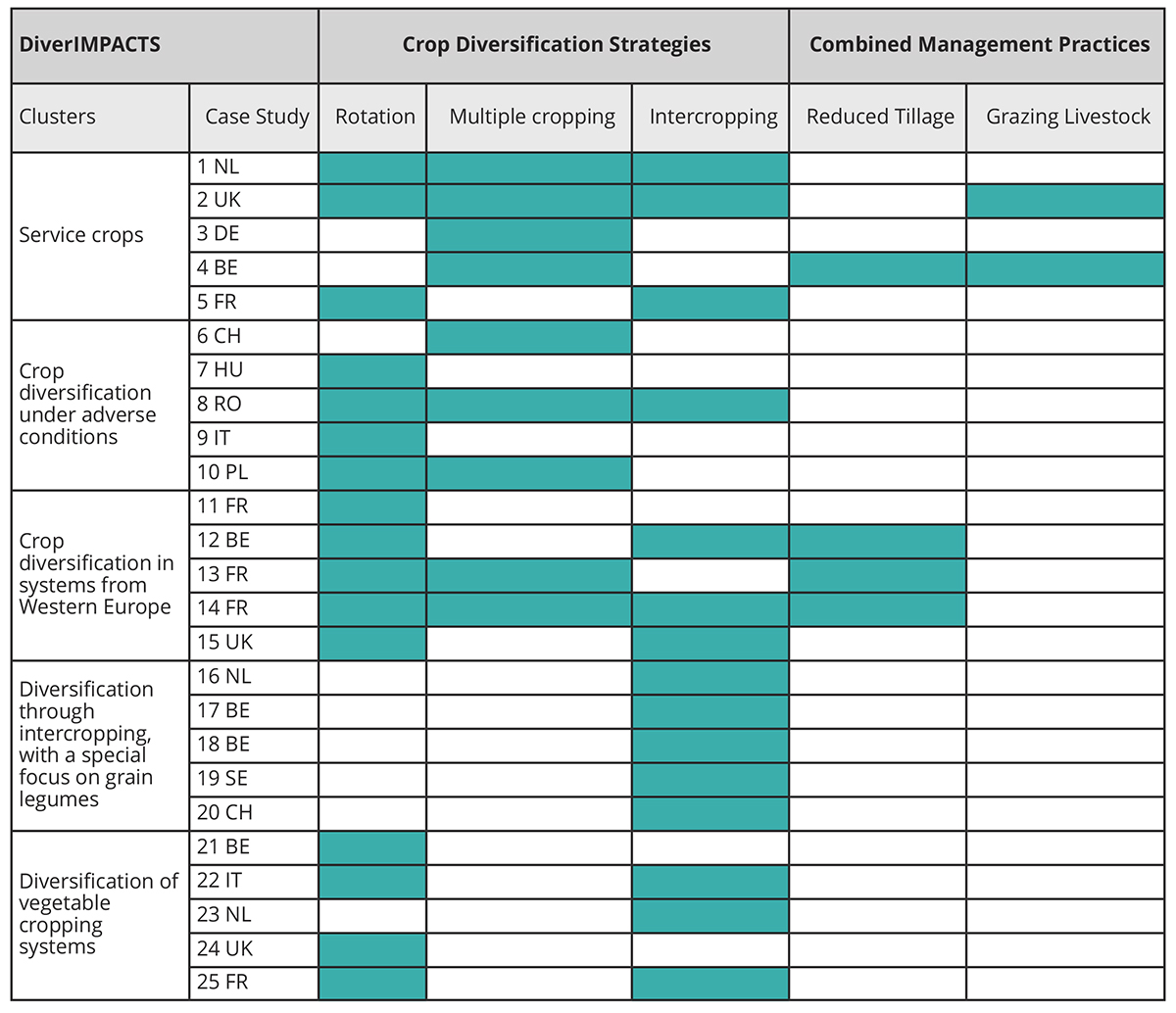Antoine Messéan, Research Manager and Lise Paresys, Scientific Officer for the National Research Institute for Agriculture, Food and Environment in France, walk us through what we need to know about enhancing crop diversification to support transitions to sustainable agri-food systems
European farms used to be highly diversified, integrating both crop and livestock production. Over the last 50 years, in an effort to increase the economic efficiency of agri-food production and agri-value chains as a whole, European farms have specialised in either crop or livestock production and intensified their production by using external inputs. Nowadays, crop production is often characterised by short rotations, or even monocultures, leading to high incidences of pests and diseases, loss of soil fertility and soil erosion, pollution and loss of biodiversity among other things.
By exploiting the potential of agrobiodiversity and biological regulation at the field and landscape levels, the temporal and spatial diversification of crops through rotation, multiple cropping and/or intercropping could support low-input agronomic practices and increase resource use efficiency. Crop diversification could fulfil the need to produce food, feed, and industrial products, while simultaneously delivering other ecosystem services and public goods, thus contributing to transitions towards sustainable agri-food systems. Despite such potential benefits, crop diversification is hindered by various technical, organisational and institutional barriers along agri-value chains (upstream input industries, farms, trading and processing industries, retailers and downstream consumers).
In this context, the overall goal of DiverIMPACTS — Diversification through Rotation, Intercropping, Multiple Cropping, Promoted with Actors and value-Chains towards Sustainability — is to exploit the full potential of crop diversification by collaborating with actors of agri-food systems to support transitions towards sustainable agri-food systems. To reach its overall goal, the project pursues the following specific objectives:
To demonstrate clear technical, socio-economic and environmental benefits of crop diversification for farmers, value-chains, territories and society, through multi-actor case studies and a network of field experiments in contrasting environmental, socio-economic and institutional contexts across 11 European countries.
To co-design technical, organisational and institutional innovations, to stimulate crop diversification, and adapt existing multi-criteria assessment methods to the needs of actors.
To provide actors with key enablers to overcome barriers to crop diversification along agri-value chains.
To develop comprehensive and long-term strategies for the agri-food system at large (agri-value chains, research and development, education, advisory systems, as well as policy and regulatory systems) to sustain crop diversification.
A project built around multi-actor case studies
DiverIMPACTS works with, and supports, 25 case studies in their dynamic processes. Each case study seeks to address local challenges by diversifying cropping systems on farms. Case studies are contrasting in terms of specific objectives (which depends on the local challenges they face), actors involved, local environmental, socio-economic and institutional conditions, organisational structures of value chains, and crop diversification strategies (increased duration of rotations and/or multiple cropping and/or intercropping). A wide range of actors are involved in case studies such as farmers, advisors, processors and scientists.
Together, these case studies constitute a Learning-for-innovation Platform, i.e., a community of practice, allowing for cross-fertilisation, knowledge sharing and learning.
For each case study, a co-innovation process supports the adaptation of the cropping systems to local contexts. Case studies benefit from the knowledge generated in other work packages, including the analysis of the success and failure factors of crop diversification across Europe and the analysis of constraints to, and opportunities for their crop diversification strategy in a local context. They are supported in identifying options to overcome technological, organisational or institutional barriers to achieving their objectives at the farm and/or value chain levels. Case studies benefit from a tailored multi-criteria assessment of the cropping system, farm, value chain and territory levels to support (i) learning cycles and decision-making in the design of sustainable crop diversification options; and (ii) the articulation of expectations between actors within and outside case studies. Case studies also benefit from feedback about the design and assessment of crop diversification options implemented in a network of ten field experiments and vice versa.
All knowledge generated in these activities is used to develop comprehensive and long-term strategies, recommendations and tools to promote the uptake of crop diversification beyond the case studies.
Ways to overcome barriers to crop diversification
Based on a global review of 99 meta-analyses summarising effects of crop diversification from 3,736 experimental studies, we showed that the effects of crop diversification vary widely depending on the crop diversification strategy implemented, the choice of crops and local contexts. Furthermore, large gaps were identified in the methods used to assess the benefits and drawbacks of crop diversification. Such results highlight the need to carefully design and assess crop diversification options.
A test carried out with three DiverIMPACTS case studies demonstrated the usefulness of multi-criteria assessment in co-designing crop diversification options fitting local contexts and people, while meeting sustainability goals.
Based on surveys in the 25 case studies, different types of interconnected barriers to crop diversification were identified along the value chains. At the farm level, barriers include a lack of knowledge and references for minor crops and crop diversification, unsuitable equipment, lack of locally-adapted crop varieties, increased complexity and uncertainties in decision making, and public policies which do not incentivise crop diversification. Beyond the farm level, barriers include high transaction costs to collect, store and manage small volumes of new crops, a lack of coordination and contracts between value chain actors, and difficulties in making the benefits of crop diversification visible and understandable to consumers.
Joining forces to unlock the potential of crop diversification in Europe
Acknowledging the need to develop a long-lasting strategy, a close collaboration with other EU Horizon 2020 funded project led to the creation of the Crop Diversification Cluster. The cluster brings together six European projects – Diverfarming, DiverIMPACTS, DIVERSify, LegValue. ReMIX and TRUE – with the objective to increase the impact of crop diversification research by transferring knowledge among and beyond projects, as well as providing joint policy recommendations. The first European Conference on Crop Diversification, convened by DiverIMPACTS in collaboration with the cluster, bolstered such knowledge exchange on crop diversification.
Remaining challenges
In the longer term, efforts made by research projects need to be sustained. Experiences are diverse, there is a need to identify overarching lessons to successfully implement crop diversification beyond these experiences. Overcoming barriers to crop diversification requires coordination among actors involved in growing, processing, distributing, and consuming agri-food products. Huge steps are, therefore, required in terms of exchange and coordination compared to conventional agri-food systems, and all possible resources need to be mobilised.
Please note: This is a commercial profile












